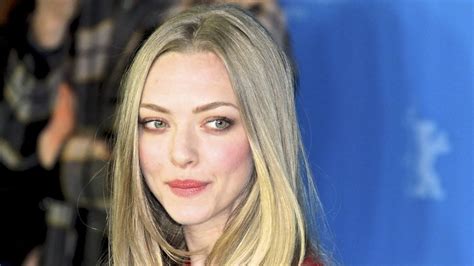Women’s Blonde Hair: A Story of Allure and Cultural Significance
Blonde hair has captivated imaginations and ignited cultural fascination for centuries. From ancient goddesses to modern-day celebrities, women’s blonde locks have symbolized beauty, allure, and a multitude of meanings throughout history. This article explores the fascinating world of women’s blonde hair, delving into its cultural significance, iconic moments, scientific wonders, and practical tips for achieving and maintaining that golden glow.

Throughout history, blonde hair has carried a rich tapestry of meanings and associations. In ancient Greece, goddesses like Aphrodite, Athena, and Artemis were often depicted with flowing blonde tresses, symbolizing their beauty, purity, and power. In the Middle Ages, blonde hair became synonymous with royalty and nobility, as it was considered a sign of aristocratic lineage.
In modern times, blonde hair continues to hold sway over perceptions of femininity and attractiveness. Research conducted by the University of California, San Diego revealed that men consistently rate women with blonde hair as more attractive and desirable than those with darker hair. This cultural bias towards blonde hair can be attributed to a combination of societal factors, including media representations, historical norms, and evolutionary preferences.
The allure of blonde hair has been captured on countless silver screens and television broadcasts. Iconic actresses like Marilyn Monroe, Grace Kelly, and Brigitte Bardot have etched their names into cinematic history with their unforgettable blonde portrayals.
- Marilyn Monroe in “The Seven Year Itch” (1955): Monroe’s iconic white dress billowing over a subway grate became an instant sensation, immortalizing her as the epitome of blonde bombshell elegance.
- Grace Kelly in “Rear Window” (1954): Grace Kelly’s sophisticated poise and icy blonde hair left an enduring impression, making her a timeless symbol of Hollywood royalty.
- Brigitte Bardot in “And God Created Woman” (1956): Bardot’s uninhibited portrayal of a sexually liberated blonde in this French New Wave classic ignited international scandal and cemented her status as a sex symbol.
Blonde hair is created through a complex interplay of genes, hormones, and environmental factors. The International Agency for Research on Cancer (IARC) estimates that approximately 2% of the world’s population has natural blonde hair.
- Genes: The primary gene responsible for blonde hair is called SLC24A5, which codes for the melanocortin-1 receptor (MC1R). This receptor helps regulate melanin production, and variations in the MC1R gene can lead to different hair colors.
- Melanin: Melanin is the pigment that gives hair its color. Blonde hair contains a lower concentration of melanin than darker hair colors.
- Environmental Factors: Exposure to sunlight, pollution, and other environmental stressors can alter hair color over time, potentially lightening or darkeningblonde hair.
Achieving and maintaining beautiful blonde hair requires a combination of professional care and at-home maintenance. Here are some helpful tips:
- Consult a Professional Stylist: A skilled hairstylist can assess your hair type, texture, and desired outcome to recommend the best blonde hair dye and application techniques.
- Choose the Right Products: Invest in high-quality hair care products designed specifically for blonde hair. These products often contain ingredients that help protect and enhance the blonde hue.
- Tone Your Hair: Toning your blonde hair can help neutralize unwanted yellow or orange undertones, leaving you with a more vibrant and natural-looking blonde.
- Protect Your Hair from Damage: Excessive heat styling, sun exposure, and chlorine can damage blonde hair. Use heat protectant sprays, wear a hat when outdoors, and limit your time spent swimming in chlorinated pools.
- **Is it damaging to dye your hair blonde?** Yes, bleaching your hair to achieve blonde results typically involves a chemical process that can damage the hair shaft. However, proper care and conditioning can minimize the damage.
- **Can you achieve natural-looking blonde hair as a brunette?** Yes, it is possible to transform brunette hair to blonde using professional hair dyeing techniques. However, it may take multiple sessions to achieve the desired blonde shade.
- **How often should I touch up my blonde hair?** The frequency of touch-ups depends on the growth rate of your hair and the desired level of blondeness. Generally, touch-ups are recommended every 4-8 weeks.
- **Is it true that blonde hair is more fragile than darker hair?** Yes, blonde hair tends to be more porous and prone to damage due to its lower melanin content.
- **Is there a way to prevent blonde hair from turning brassy?** Yes, using purple or blue shampoo and conditioner can help neutralize unwanted yellow or orange tones in blonde hair.
- **Is it possible to achieve blonde hair without bleach?** There are some natural hair lightening methods, such as using lemon juice or chamomile tea, but these typically produce subtle results and may not be suitable for all hair types.
Conclusion
Blonde hair continues to reign as a symbol of beauty, glamour, and cultural fascination. Its allure has been captured on the silver screen, immortalized in art and literature, and celebrated by women throughout history. Whether natural or achieved through professional hair care, blonde hair remains a timeless and enchanting aspect of feminine allure.
